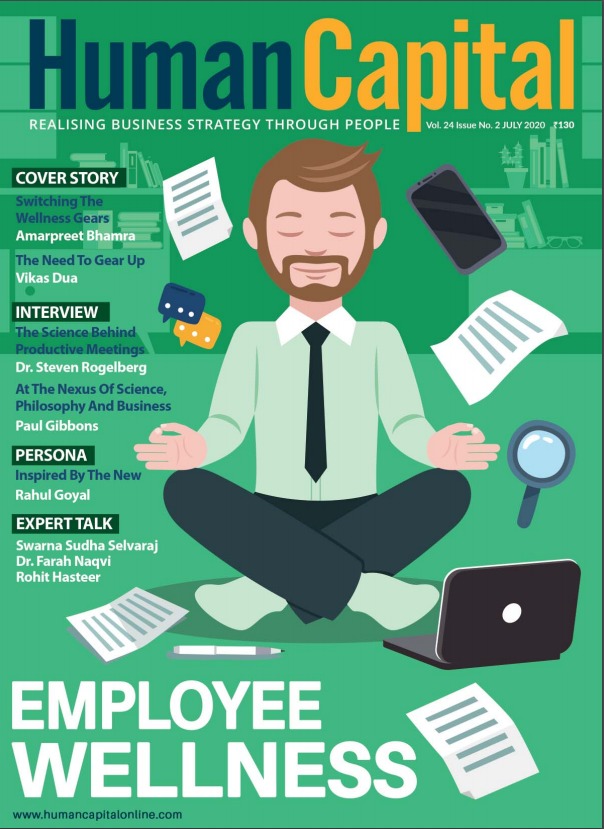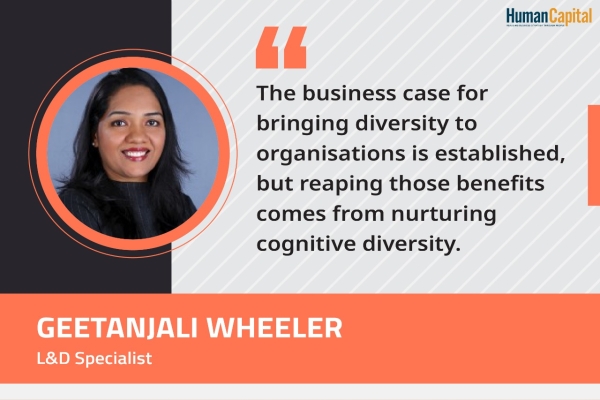L&D managers need to constantly be on the lookout for new trends and understand some key do’s and don’ts when implementing online learning in their organisations.
Online learning was already being hailed as the next big thing in employee training even before the global pandemic significantly boosted its use, with many companies transitioning to mass remote work. However, to effectively utilise online learning and reap maximum benefit from it, Learning and Development (L&D) managers need to constantly be on the lookout for new trends and understand some key do’s and don’ts when implementing online learning in their organisations.
Although several trends, such as mobile learning, microlearning, free online learning courses, gamification, and personalised learning experiences, have been around for a while, their popularity has skyrocketed since the pandemic. While organisations understood the importance of these developments earlier, they dilly-dallied with the implementation with countless excuses. As a result of the pandemic, they’ve become nearly impossible to avoid.
1. Mobile Learning
Mobile learning has populated online learning/e-learning articles and news as a major trend for quite some time now. In the first quarter of 2021, mobile devices (excluding tablets) generated 54.8% of global website traffic, in a record statistic.
Mobile learning is getting widespread acceptance for a variety of reasons, including the convenience, portability, ease of use, and affordability of mobile devices, in addition to the availability of 3G and 4G broadband in even the most remote areas around the world.
2. Microlearning
Microlearning is a trend that’s been associated with online learning for many years. The modern generations have shorter attention spans because they are constantly bombarded with vast amounts of information every day from all directions, which was not the case a few decades ago. Microlearning is ideal for this generation of learners because it delivers information in short bursts – at a rate that matches their ability to focus, thus helping them absorb knowledge more efficiently.
Every L&D manager must include microlearning in their organisation’s online learning program. It has been shown to improve learning transfer by 17% compared to traditional learning methods, generate 50% more engagement, reduce development costs by 50%, and increase development speed by 300%[1].
3. Gamification
Gamification has become a mainstream online learning tool these days, owing to extensive research documenting its positive effects on employees and their learning.
According to a popular LMS company survey, 82% of the respondents said that one of the reasons gamification works so well as a learning tool is that games inherently make people happy. In the same survey, 62% of the respondents opined that gamification’s competitive nature motivates employees, especially if they play against their colleagues and a leaderboard is involved[2].Several LMS applications now include game dynamics that you can incorporate into your learning and development/ training programs.
4. Free Online Learning Courses
Lockdowns during the pandemic led to employees all over the world enrolling in free online learning courses in their spare time to learn new skills and hone existing ones. There’s a multitude of free online learning courses and MOOCs (massive open online courses) available on the internet today that can be leveraged as a part of your organisation’s L&D strategy. Several organisations have provided employees with access to online learning platforms such as Udemy, Skillshare, Udacity, UpGrad and Coursera, enabling them to choose and take courses on the skills they want to learn.
5. Personalised Learning Experiences
Who doesn’t like things that are custom-made for them? The same goes for learning experiences. Mobile learning, gamified learning content, and microlearning are trends that have facilitated the personalisation of the learning experience and have allowed learners to learn right at their fingertips.
Such personalised learning experiences are usually created by analysing employee data and/or making employees answer detailed questionnaires to create highly customised training paths for them. This results in a learning program crafted explicitly for each employee that provides them with the learning they need in the way they want.
The Do’s and Don’ts of Online Learning for L&D Managers
The L&D industry has a long list of best practices, as well as complete nonos for its practitioners, particularly now that the entire online learning market has significantly evolved. Let’s take a look at what L&D managers should and shouldn’t do when developing a learning strategy in present times.
Do’s
✓ Understand your learners’ needs
Each person is unique, with different learning styles and learning needs. Creating a onesize-fits-all approach is guaranteed to leave some of your learners disappointed and unresponsive to learning. As previously stated, try to offer personalised learning experiences to your learners. Ask them how they prefer to learn—through mobile learning, remote training sessions, content such as PDFs, or videos.
✓ Ensure that learning content is easily accessible and delivered in a relevant and timely manner
Mobile learning can help with this, as long as you’ve created a repository for your learning content that employees can access on their mobile devices and that it is regularly updated with relevant content. If you can integrate a system that notifies employees of new learning content on their mobile devices, do that. A centralised repository for learning content also ensures that learners can access any content whenever they want, propagating just-in-time learning.
✓ Involve yourself in the online learning/training
As an L&D manager, your duties are not limited to creating learning strategies and programmes. Involve yourself in the whole programme and ensure its success by interacting with the employees and learners using it. Encourage and motivate them to complete learning/training modules, cite their advantages to them, recognise and reward employees who complete modules and courses, involve managers from other functions of the organisation, and ask them to do the same for employees working under them. Be a facilitator—give it your all to make your L&D programme a success.
Don’ts
✖ Convert traditional learning content into online learning/e-learning content
Traditional learning and e-learning are poles apart. While some traditional learning content can be transformed and adapted for online learning or e-learning, do not simply copy and paste the same content into e-learning. It’ll fail every time. Use the trends mentioned above to make it more engaging than just a glorified presentation with text and images.
✖ Copy another organisation’s L&D strategy
Even if you are tempted, refrain from doing so. Each organisation is different, and so are its learners. Attempting to replicate another organisation’s L&D strategy may save you time and effort, but it will not produce results. Creating an L&D strategy necessitates a thorough understanding of the organisation’s employees’ learning needs, requiring extensive research, planning and effort.
✖ Be afraid to experiment
Gone are the times when old traditional models used to be the commandments for a successful L&D program. The world has changed, technology is the greatest disrupter, and a little bit of creativity never harmed anyone. If you can blur the lines between learning and enjoyment, you’re onto something — it doesn’t matter how unconventional. Don’t be afraid to experiment and try new ways to make learning more engaging for your learners. Who knows, you might invent a new learning technique that will benefit thousands of learners in the future!
References:
[1]https://www.shiftelearning.com/blog/ numbers-dont-lie-why-bite-sized-learning-isbetter-for-your-learners-and-you-too
[2] https://www.talentlms.com/blog/ gamification-survey-results/
Is your organisation post-COVID-ready?
Trending
-
SBI General Insurance Launches Digital Health Campaign
-
CredR Rolls Out 'Life Happens' Leave For Its Employees
-
Meesho Announces 30-Week Gender-Neutral Parental Leave Policy
-
Microsoft Unveils Tech Resilience Curriculum To Foster An Inclusive Future
-
60% Indian Professionals Looking For Job Change Due To COVID: Survey
-
SpringPeople And Siemens Collaborate For Digital Transformation Push
-
86% Professionals Believe Hybrid Work Is Essential For Work Life Balance: Report
-
Almost 1 In Every 3 People's Personal Life Affected Due To Work Stress
-
Meesho Rolls Out Reset And Recharge Policy For Employees
-
80% Of Talent Leaders & Academics Say Pandemic Changed Skill Needs For Youth: Report
-
Hero Electric Rolls Out 'Hero Care' Program For Employees
-
Human Capital In Collaboration With ASSOCHAM Hosts Virtual Conference
-
IKEA India, Tata STRIVE Collaborate To Create Employability And Entrepreneurship Opportunities
-
SAP India, Microsoft Launch Tech Skilling Program for Young Women
-
DXC Technology, NASSCOM Collaborate For Employability Skills Program
-
Lenskart To Hire Over 2000 Employees Across India By 2022
-
Mindtree Launches Learn-and-Earn Program
-
Tata AIA Extends 'Raksha Ka Teeka' To Its Employees
-
Swadesh Behera Is The New CPO Of Titan
-
NetConnect Global Plans To Recruit 5000 Tech Professionals In India
-
Hubhopper Plans To Hire 60% Of Indian Podcasters By 2022
-
Corporate India Needs More Women In Leadership Roles: Report
-
Aon to Invest $30 Million and Create 10,000 Apprenticeships by 2030
-
Tech Mahindra Launches ‘Gift a Career’ Initiative for Upskilling of Youth
-
40% Women Prefer Flexible Working Options in Post-COVID World: Survey
-
3 out of 4 companies believe they can effectively hire employees virtually: Report
-
Vodafone , CGI and NASSCOM Foundation launch digital skills platform
-
Odisha: Bank, postal employees to deliver cash for elderly, differently-abled persons
-
Skill India launches AI-based digital platform for "Skilled Workforce"
-
Hiring activity declines 6.73% in first quarter: Survey
-
70% startups impacted by COVID-19 pandemic
-
Bajaj Allianz Life ropes in Santanu Banerjee as CHRO
-
Over 70 Percent MSMEs look at cutting jobs to sustain businesses
-
93 Per Cent employees stressed about returning to office post-lockdown
-
Johnson & Johnson India announces family benefits for same gender partners
-
Indian firms turning friendly towards working mothers
-
Welspun India names Rajendra Mehta as new CHRO
-
Wipro partners with NASSCOM to launch Future Skills platform



Human Capital is niche media organisation for HR and Corporate. Our aim is to create an outstanding user experience for all our clients, readers, employers and employees through inspiring, industry-leading content pieces in the form of case studies, analysis, expert reports, authored articles and blogs. We cover topics such as talent acquisition, learning and development, diversity and inclusion, leadership, compensation, recruitment and many more.
Subscribe Now












































Comment